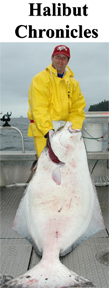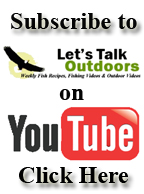 Fisheries managers on both sides of the border continue to mismanage our fisheries. This week WDFW announced massive Draconian cuts throughout Puget Sound. Meanwhile, British Columbia Fisheries managers announced massive no fishing zones that will have untold negative effects to the sport fishing community and tourism to the tune of 100s of millions of lost dollars to the province.
Fisheries managers on both sides of the border continue to mismanage our fisheries. This week WDFW announced massive Draconian cuts throughout Puget Sound. Meanwhile, British Columbia Fisheries managers announced massive no fishing zones that will have untold negative effects to the sport fishing community and tourism to the tune of 100s of millions of lost dollars to the province.
“Trust us,” says the fisheries managers on both sides of the border. “We know what we are doing, and doing what we must to save endangered expected low runs of key Chinook runs.”
I’m sorry, but I have no trust in this bunch of idiots. These fisheries managers are nothing more than bureaucrats protecting fiefdoms of fisheries control and power. These same fisheries managers on local, state and federal levels as well as politicians are responsible for the following.
In Washington State
- Dam rivers
- In 1972 they created Marine Mammal Protection Act without reasonable measures to reverse or eliminate this protection. Pinnipeds are now overpopulated by a factor of six. A recent study concluded pinnipeds are eating more than 600 metric tons of Chinook salmon every year in Washington state waters.
- Allowed commercial over harvest of salmon
- Mixed hatchery stocks throughout the Puget Sound basin virtually destroying genetics for individual river stocks.
- Between 1962 and 1973, allowed capture of Orcas for aquariums. At least 263 were caught or killed in the waters of Washington and British Columbia (Bigg and Wolman 1975).
- Prior to current WDFW two agencies controlled fish and wildlife, Department of Fisheries (saltwater) and Game Department (freshwater & game). On the saltwater side fisheries managers favored commercial fisheries. When the agencies combined each group had their own power bases and focus of effort. As you can imagine sports anglers got the short end of the stick before and after.
- Feds declare some runs of Chinook salmon as “Endangered” giving them and ESA listing
- Close or drastically reduced hatchery Chinook production because of ESA. As a result Orca numbers declined at the same rate as Chinook numbers.
- In 2006 NOAA fisheries managers declared 14 Puget Sound rivers have extinct runs of wild Chinook. This is largely due to mixing stocks by our fisheries managers
- Federal Fisheries managers do an end around to maintain control and create an ESU listing, “Evolutionary Salmon Unit.” Fisheries managers want to keep their jobs, power and control over man, land, water and fish. This new listing maintained control. This means when two “natural spawn” hatchery Chinook spawn without the aid of the hatchery they are essentially now wild and must be protected. This new listing maintains power and control, nothing more.
- Fisheries managers and state bureaucrats continue to allow salmon net pens
In British Columbia fisheries managers face many of the same issues listed above. And like Washington they must deal with Federal fisheries managers as well as First Nations fisheries managers and politics.


The Orca problem is one of the key issues across the border. And like Washington, Canadians don’t want to do anything meaningful to help the Orcas and instead focus on sports anglers. A recent report says a complete Chinook sport closure will only amount to less than 2% more Chinook for Orcas to eat.
In my opinion Washington and British Columbia needs to do the following to help increase Chinook numbers as well as feed the Orcas.
 1. Reduce numbers of seals and invasive California sea lions. Yes, this means “lethal” removal. This means getting Feds to eliminate or drastically change Marine Mammals Protection Act
1. Reduce numbers of seals and invasive California sea lions. Yes, this means “lethal” removal. This means getting Feds to eliminate or drastically change Marine Mammals Protection Act
2. Increase hatchery production
3. Decrease or eliminate commercial harvest of herring
4. Eliminate ALL non-selective gill nets
5. Force NOAA to reduce by-catch of Chinook in Alaska. Hundreds of thousands of Chinook are killed as by-catch in the mid-water trawl fishery in Alaska
6. Clip ALL hatchery Chinook
7. Manage overpopulation of cormorants and mergansers. These birds eat millions of smolts and should be controlled
We should all remember, there’s no money or continued control and power to restore our Chinook. From a bureaucrat’s point of view maintaining “status quo” maintains their jobs, power and control. The Chinook and Orca crisis is a multi-billion dollar industry that fisheries managers want to continue because it is profitable. Let’s end years of failed fisheries management policies and help the fish!
Below are some of the major changes for Washington State Salmon 2019 to 2020 salmon seasons.
Notable changes compared to 2018-19 season:
Ocean Marine Areas 3 La Push & 4 Neah Bay
June 22 to September 30 — Open for Chinook and hatchery coho. Areas will close when quotas are met. La Push has a 1,300 Chinook quota and 4,150 hatchery coho. Neah Bay has a 5,500 Chinook quota and 16,600 hatchery coho. Daily limit 2 salmon both areas.
Marine areas 5 (Sekiu) and 6 (East Strait Juan de Fuca) are closed to salmon fishing in February.
Area 5 — Sekiu open for Hatchery Chinook July 1 to Aug. 15 Hatchery coho and pinks open July 1 to Sept. 30. Daily limit of two salmon with no extra bag limit for pinks this season — there will be no bonus bag limits for pinks in any marine area in 2019.
Marine Area 7 is closed to salmon fishing in August, October, and January.
Marine Area 8-1 is closed to salmon fishing in December and January but open for coho fishing in October.
Marine Area 8-2 will be open from Aug. 16 through Sept. 15 for hatchery coho from the Mukilteo/Clinton line south and west towards Marine Area 9. Similar to 8-1, this area will be closed to salmon fishing in December and January.
Marine Area 9 opens slightly later (July 25) this year with a lower quota for Chinook (3,500 fish) and is closed in January.
Elliott Bay in Marine Area 10 is scheduled only to be open the first weekend in August, however, additional openings could be added during August.
Marine Area 10 will open July 25 for chinook fishing. The Area 10 summer quota is 3,057 chinook. Last year it was 4,743.
Marine Area 11 is closed in June and then again from October through December. The area quota for the summer (July through September) is 2,800 chinook. In order to maximize opportunity for chinook, boat fishing will be open five days per week (Saturday through Wednesday) while shoreline fishing will be open daily.
Marine Area 12 (north of Ayock) will open in August (a month earlier than 2018) for coho fishing.
In Marine Area 13 there will be a 20-inch minimum size for chinook July through September.
Columbia River
The summer salmon fishery will be closed to summer Chinook (including jacks) and sockeye retention due to low expected returns this year.
Fall salmon fisheries will be open under various regulations. Waters from Buoy 10 upstream to the Hwy. 395 Bridge at Pasco will open to fall salmon fishing beginning Aug. 1.





